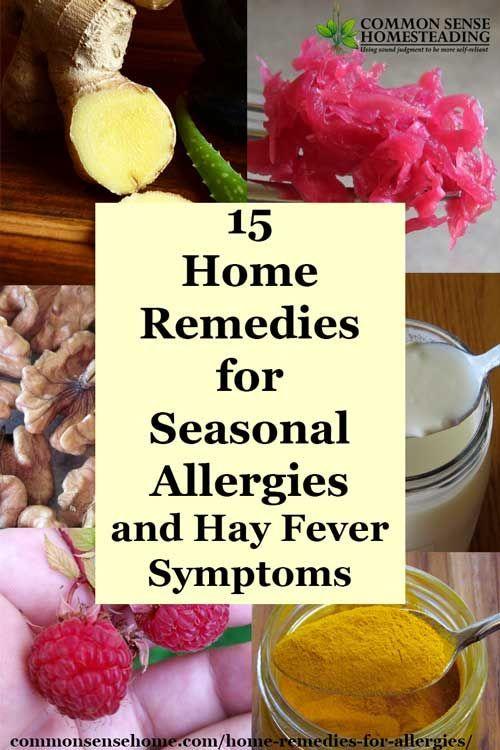
Some new hay fever tips.
If you happen to be one of the many unfortunate people who suffer from hay fever, you will likely not be all pleased about the arrival of spring, summer.
Pollen laden spring air can be the source of misery and discomfort that may last for weeks or months.
Violent sneezing fits, asthma attacks, sinus headaches, itchy eyes, runny noses, wheezing, and coughing are all common symptoms of this seasonal bane.
It is caused by an allergy to pollen or sometimes mold spores.
In hay fever the body’s immune system over reacts to the presence of external substances, as if they were something toxic.
Pollen allergy can appear at any age, but tends to be worse among teenagers and young adults.
Some people get symptoms for five or six consecutive seasons and then never have another attack, while others suffer season after season for up to twenty years.
Hay fever is such a common complaint that most people know its symptoms.
You have to have had the experience though to know exactly how wretched it can make you feel.
To make matters worse, popular treatment can occasionally make it worse.
Decongestant nasal sprays and drops tend to lose their effect after several days of continuous use and may harm the delicate lining of the nasal passages, making the symptoms worse.
Pollen allergy can appear at any age, but tends to be worse among teenagers and young adults.
Some people get symptoms for five or six consecutive seasons and then never have another attack, while others suffer season after season for up to twenty years.
Causes of hay fever
Every year, several thousands of tons of tree and grass pollen are released into the air during the spring and summer months.
It is in this way that pollen, produced by plants for the purpose of fertilisation, is able to reach its required destination of another plant of the same species.
The wind is responsible for much pollen transport however, and it is windborne pollen that causes hay fever.
Highly coloured and strongly scented flowers rarely play a significant part in this process.
This is because they attract insects and are pollinated by the insect population that visits them.
It is the lighter and more bouyant pollen of trees, grasses and weeds that are more likely to cause symptoms.
Once one of these pollens causes you allergy problems, the rest are likely to do so as well.
The quantity of pollen produced depends on the weather, symptoms tending to be worse on hot, dry, windy days.
So distressing can the perpetual sneezing, nose blowing, eye irritation and nasal stuffiness become that it is understandable that sufferers feel as though they are never free from them.
The majority buy over the counter remedies such as decongestant nasal drops and sprays, several million of which are sold by pharmacists annually.
These are fine for a short-term relief, however you may find that their effect wears off after three or four days.
In addition “rebound congestion” can sometimes occur with over use, causing swollen nasal mucous membranes similar to the condition you used the product for in the first place.
There is another option. It is natural medicinal herbs.
According to the UNEP World Conservation Monitoring Centre, just in the U.S. alone 56 percent of the top 150 prescribed drugs, are linked with discoveries made in wild plants.
Healing with herbs is almost as ancient as human history itself.
In some countries treatises on the healing arts were the very first scriptures to ever have been recorded, and fragments of these have survived to this day.
Although these scriptures seem ancient to us today – some dating to several millennia B.C., by the time they were first recorded the knowledge they preserved was already old.
A few examples of how herbs can help with hay fever.
Supporting the immune system gives the body a better chance to deal with it.
- Vitamin C and zinc may be helpful.
- A cup of Dandelion tea in the morning and Lime flower tea with a few drops of lemon juice in the evening is an old home remedy.
- Reducing mucus forming foods and switching to a predominantly vegetarian diet with lots of fresh fruits and salads increases the fortifying vitamin supply and also helps to reduce the potential congestion.
- Nettle leaf extract, tea or tincture is also helpful.
For the best results it is recommended to start taking a regular dose about a month before symptoms are expected to set in.
- Chamomile and Elderberry are effective anti-inflammatories.
- Taken with lemon juice, honey and a pinch of Ginger or Cayenne, adds decongestant properties.
Also very helpful are steam inhalations.
- A Chamomile steam bath clears the upper respiratory system and soothes the mucous membranes. A steam bath is easy to prepare. Just take a handful of Chamomile flowers and place them in a bowl. Add simmering water and cover yourself and the bowl with a big towel or blanket and inhale deeply until the steam-bath cools down.
This performance can be repeated several times a day as necessary.